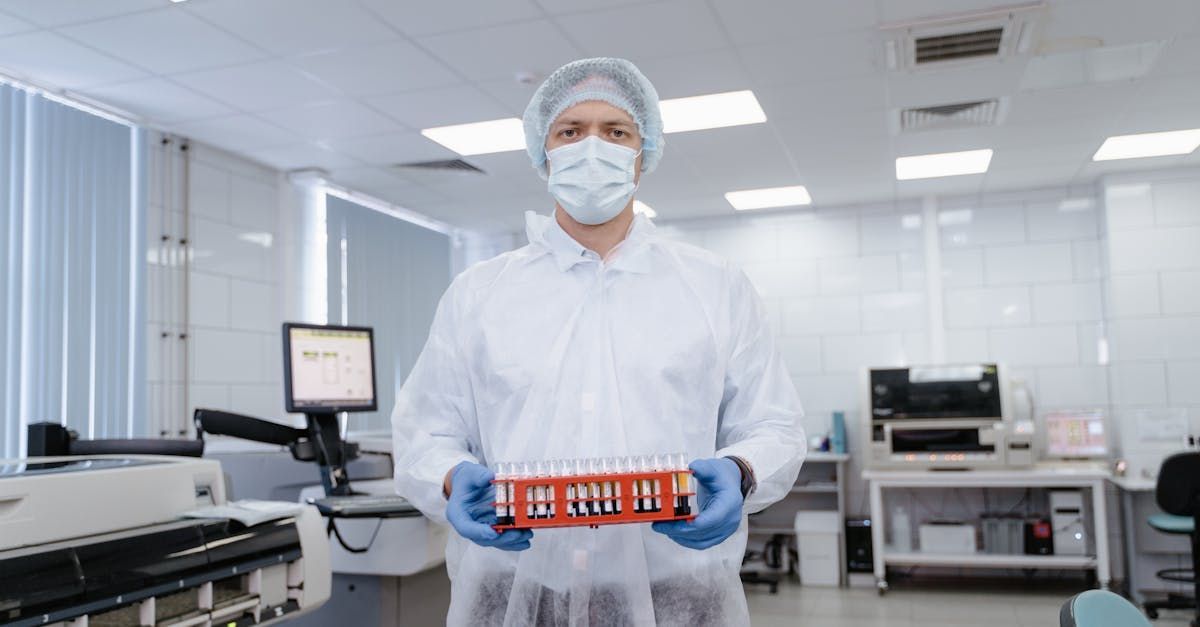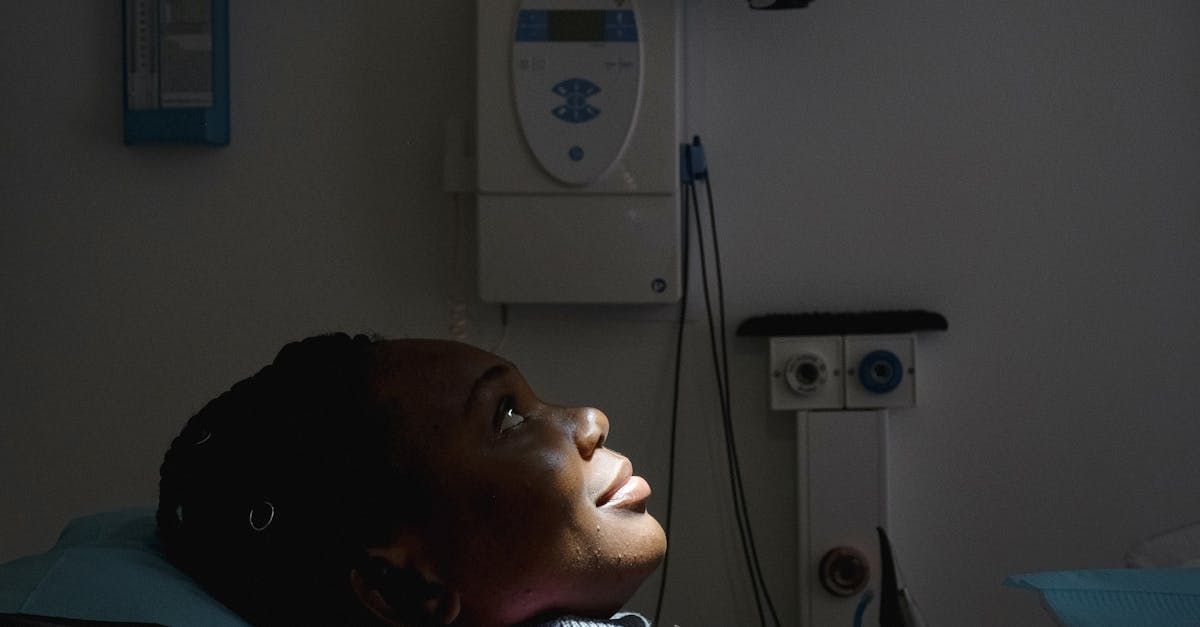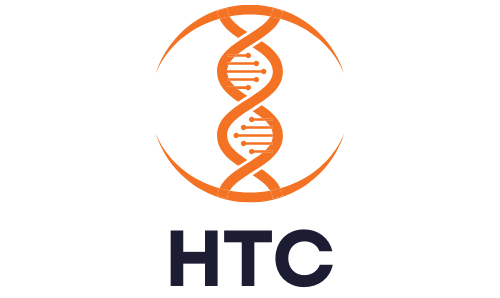International HealthTech Markets: Opportunities and Risks
In recent years, the HealthTech industry has experienced unprecedented growth, driven by technological advancements and an increasing demand for innovative healthcare solutions. From telemedicine platforms to AI-powered diagnostics, HealthTech is revolutionizing the way healthcare is delivered and managed across the globe. The convergence of technology and healthcare has created a dynamic and rapidly evolving market that promises to enhance patient outcomes, reduce costs, and improve overall healthcare efficiency.
While the HealthTech revolution has made significant strides in developed markets like the United States and Europe, international markets are emerging as key players in this transformative sector. Countries in Asia, Africa, and Latin America are witnessing substantial investments in HealthTech infrastructure, fueled by rising healthcare needs and a growing middle class. These regions offer vast potential for HealthTech companies to expand their reach, tap into new customer bases, and drive innovation tailored to local needs.
This blog aims to explore the opportunities and risks associated with the international HealthTech markets. By examining the current landscape, identifying key growth areas, and highlighting potential challenges, we seek to provide a comprehensive understanding of what it takes to succeed in this global market. Whether you are an investor, a HealthTech entrepreneur, or a healthcare professional, understanding these dynamics is crucial for navigating the complexities and leveraging the opportunities in the international HealthTech arena.
Understanding International HealthTech Markets
HealthTech, a broad term encompassing various technological innovations in healthcare, varies significantly across different regions. In developed countries, HealthTech often includes advanced AI diagnostics, electronic health records (EHRs), telehealth services, and sophisticated wearable devices. In contrast, emerging markets may focus more on mobile health (mHealth) applications, affordable diagnostic tools, and telemedicine solutions to bridge gaps in healthcare access. The scope of HealthTech in each region is shaped by local healthcare needs, technological infrastructure, and economic conditions.
Key Drivers of HealthTech Growth Internationally
- Aging Populations: Globally, populations are aging at an unprecedented rate. By 2050, the number of people aged 60 and over is expected to double, reaching over 2 billion. This demographic shift drives the demand for HealthTech solutions that can provide efficient, accessible, and high-quality care for older adults. Innovations such as remote patient monitoring, AI-powered elderly care solutions, and telehealth services are crucial in addressing the healthcare needs of aging populations.
- Rising Healthcare Costs: Healthcare costs continue to rise worldwide, putting pressure on healthcare systems and economies. HealthTech offers solutions to mitigate these costs through improved efficiency, prevention, and personalized care. For example, predictive analytics can help reduce hospital readmissions, while digital therapeutics can provide cost-effective treatment options for chronic conditions.
- Technological Advancements: Rapid advancements in technology, including AI, machine learning, and blockchain, are propelling the HealthTech industry forward. These technologies enable the development of innovative solutions that can improve diagnosis, treatment, and patient management. The integration of IoT in healthcare devices, big data analytics, and telemedicine platforms are some examples of how technological advancements are transforming healthcare.
Comparison of HealthTech Adoption Rates Across Various Countries
HealthTech adoption rates vary significantly across countries due to differences in economic development, healthcare infrastructure, and regulatory environments.
- United States: The U.S. leads in HealthTech innovation and adoption, driven by substantial investment in research and development, a robust startup ecosystem, and a favorable regulatory framework. Telemedicine, AI diagnostics, and EHRs are widely adopted across the country.
- Europe: European countries like the UK, Germany, and the Netherlands are also at the forefront of HealthTech adoption. The region benefits from strong governmental support for digital health initiatives and a collaborative approach to healthcare innovation. However, adoption rates can vary within the region due to differing healthcare policies and economic conditions.
- Asia: Countries such as China, India, and Japan are rapidly catching up in HealthTech adoption. China, for instance, is investing heavily in AI and big data for healthcare, while India focuses on mHealth applications to address rural healthcare challenges. Japan’s aging population drives the adoption of elderly care technologies and robotics.
- Africa and Latin America: These regions show immense potential for HealthTech growth, although adoption rates are currently lower compared to developed countries. Factors such as limited infrastructure, economic constraints, and regulatory hurdles pose challenges. However, innovations in mobile health and telemedicine are making significant inroads, addressing critical healthcare needs in underserved areas.
Understanding these regional differences is essential for HealthTech companies looking to expand internationally. Tailoring solutions to meet local healthcare needs and navigating regulatory landscapes are key strategies for success in the global HealthTech market.
Opportunities in International HealthTech Markets
High-Growth Regions for HealthTech Investments
Asia-Pacific
The Asia-Pacific region is one of the fastest-growing markets for HealthTech investments. Countries such as China, India, and Japan are leading the charge with substantial investments in digital health infrastructure, AI-driven healthcare solutions, and telemedicine platforms. The region's large and diverse population presents a significant market for scalable HealthTech solutions. For instance, China's emphasis on AI and big data analytics in healthcare is driving innovations that are setting global standards.
Europe
Europe continues to be a fertile ground for HealthTech innovation, thanks to strong governmental support, a collaborative healthcare ecosystem, and significant investment in research and development. Countries like Germany, the UK, and the Netherlands are notable for their advanced HealthTech ecosystems. The European Union's regulatory framework, which emphasizes data protection and patient safety, also provides a stable environment for HealthTech companies to thrive.
Latin America
Latin America is emerging as a promising market for HealthTech, with countries like Brazil, Mexico, and Chile at the forefront. The region's growing middle class and increasing internet penetration are driving the adoption of telemedicine and mobile health solutions. Investments in digital health infrastructure are also gaining momentum, offering significant opportunities for HealthTech companies to expand their footprint.
Specific Opportunities in Emerging Markets vs. Developed Markets
Emerging Markets
- Mobile Health (mHealth): In regions with limited healthcare infrastructure, mobile health applications are proving to be transformative. For example, mHealth solutions are helping to deliver healthcare services to remote and underserved areas in Africa and Southeast Asia.
- Telemedicine: Telemedicine platforms are bridging the gap in healthcare access, especially in rural areas. India’s telemedicine sector, for instance, has seen rapid growth, providing consultations and diagnostic services to millions of people.
- Affordable Diagnostic Tools: Emerging markets are focusing on cost-effective diagnostic solutions. Portable diagnostic devices and affordable lab-on-a-chip technologies are being developed to cater to low-resource settings.
Developed Markets
- AI and Machine Learning: In developed markets, AI and machine learning are being integrated into various aspects of healthcare, from predictive analytics to personalized treatment plans. The US and Europe are leaders in this area, with numerous startups and established companies innovating in AI-driven healthcare solutions.
- Wearable Technology: Wearable health devices are gaining traction in developed markets, offering continuous monitoring of vital signs and chronic conditions. These devices are popular in North America and Europe, where consumer health awareness is high.
- Advanced Telehealth Services: Developed countries are also seeing the evolution of telehealth services, incorporating advanced features like remote surgery and virtual reality (VR) therapy. These innovations are enhancing the scope and quality of telehealth offerings.
Examples of Successful HealthTech Companies and Innovations in Different Regions
Asia-Pacific
- Ping An Good Doctor (China): This online healthcare platform offers a wide range of services, including teleconsultations, online prescriptions, and health management tools. It has become one of the largest telemedicine platforms in the world.
- Practo (India): Practo is a leading health app in India that connects patients with doctors, provides online consultations, and offers health records management. It has expanded its services to several other countries in Asia.
Europe
- Babylon Health (UK): Babylon Health uses AI and telemedicine to provide healthcare consultations. Its AI-driven chatbot offers preliminary diagnosis and advice, while human doctors are available for further consultation.
- Ada Health (Germany): Ada Health's AI-powered app helps users identify their symptoms and provides information on possible conditions. It has gained significant traction in Europe and beyond.
Latin America
- Dr. Consulta (Brazil): Dr. Consulta operates a network of affordable healthcare clinics in Brazil, offering medical consultations, diagnostics, and treatment at accessible prices. The company has successfully leveraged technology to streamline operations and improve patient care.
- Clínicas del Azúcar (Mexico): This chain of specialized diabetes clinics in Mexico uses technology to provide comprehensive care to diabetic patients. Their model focuses on affordability and accessibility, making it easier for patients to manage their condition.
Market Trends and Innovations
Regional Trends in HealthTech Innovation
Telemedicine in Asia
Asia is experiencing a rapid rise in telemedicine adoption, driven by the need to address healthcare access disparities in densely populated and rural areas. Countries like India and China are leading the way with comprehensive telehealth platforms that provide remote consultations, diagnostic services, and prescription delivery. In India, the telemedicine market is expected to grow exponentially due to favorable government policies and increasing smartphone penetration.
Digital Health in Europe
Europe's HealthTech landscape is marked by significant advancements in digital health, particularly in electronic health records (EHRs), digital therapeutics, and AI-driven healthcare solutions. The European Union's emphasis on data privacy and security has also fostered innovations in secure health data management. Countries such as the UK, Germany, and the Netherlands are at the forefront, with numerous startups and established companies driving digital health innovation.
Wearable Technology in North America
North America, particularly the United States, is a leader in wearable health technology. Devices such as fitness trackers, smartwatches, and health monitoring wearables are widely adopted, offering real-time data on various health metrics. These devices are increasingly being integrated with healthcare systems to provide continuous monitoring of chronic conditions and enhance preventive care.
Notable HealthTech Startups and Their Contributions to the Market
Asia-Pacific
- Ping An Good Doctor (China): Ping An Good Doctor has revolutionized healthcare in China with its AI-powered telemedicine platform. It offers 24/7 access to medical consultations, online prescriptions, and a wide range of health management tools, serving millions of users.
- Practo (India): Practo connects patients with healthcare providers through its app, offering services such as online consultations, appointment bookings, and health records management. It has expanded its operations to multiple countries in Asia, enhancing healthcare accessibility.
Europe
- Babylon Health (UK): Babylon Health combines AI and telemedicine to provide healthcare consultations and preliminary diagnoses. Its AI-driven chatbot offers users immediate health advice, while human doctors are available for more in-depth consultations.
- Ada Health (Germany): Ada Health's AI-powered app helps users identify symptoms and provides information on possible conditions. It has gained significant traction in Europe and beyond, contributing to more informed and proactive healthcare management.
Latin America
- Dr. Consulta (Brazil): Dr. Consulta operates a network of affordable healthcare clinics across Brazil, providing accessible medical consultations, diagnostics, and treatment. The company leverages technology to streamline operations and improve patient care.
- Clínicas del Azúcar (Mexico): Specialized in diabetes care, Clínicas del Azúcar uses technology to offer comprehensive and affordable diabetes management services. Their model focuses on accessibility and patient education, significantly improving diabetes outcomes in Mexico.
Case Studies of Innovative HealthTech Solutions and Their Impact
Case Study 1: Ping An Good Doctor
Ping An Good Doctor has had a profound impact on healthcare in China by addressing the issue of limited access to medical professionals. With its AI-powered telemedicine platform, the company provides 24/7 access to medical consultations, diagnostic services, and health management tools. This innovation has significantly reduced the burden on physical healthcare facilities and improved healthcare accessibility for millions of Chinese citizens, particularly in rural areas.
Case Study 2: Babylon Health
Babylon Health has made significant strides in the UK by integrating AI into healthcare delivery. Its AI-driven chatbot assists users in identifying their symptoms and offers preliminary health advice. The platform also connects users with human doctors for in-depth consultations. Babylon Health's approach has reduced wait times for medical consultations and provided users with a reliable and accessible health advisory service, demonstrating the potential of AI in transforming healthcare.
Case Study 3: Dr. Consulta
Dr. Consulta has revolutionized healthcare in Brazil by making medical services affordable and accessible. By operating a network of technology-driven clinics, the company provides comprehensive healthcare services, including consultations, diagnostics, and treatment, at significantly lower costs. Dr. Consulta's model has improved healthcare access for underserved populations, reducing the strain on public healthcare systems and enhancing overall health outcomes.
Case Study 4: Clínicas del Azúcar
In Mexico, Clínicas del Azúcar has set a new standard for diabetes care by offering specialized, affordable services for diabetes management. The use of technology in patient education, monitoring, and treatment has led to improved health outcomes for diabetic patients. The clinics' focus on accessibility and comprehensive care has made it easier for patients to manage their condition effectively, demonstrating the impact of tailored HealthTech solutions on chronic disease management.
Investment Strategies
Investors looking to capitalize on the HealthTech boom need to identify markets with the highest growth potential and favorable investment climates. Key factors to consider include:
- Market Demand: Look for regions with high unmet healthcare needs and a growing demand for innovative solutions. Emerging markets in Asia, Latin America, and Africa often present significant opportunities due to their expanding middle class and increasing healthcare spending.
- Technological Infrastructure: Assess the level of technological infrastructure in potential markets. Countries with strong digital infrastructure, high internet penetration, and widespread smartphone usage are better positioned for HealthTech adoption.
- Government Support: Favorable government policies and initiatives can greatly enhance the prospects of HealthTech investments. Look for markets where governments are actively promoting digital health, telemedicine, and other HealthTech innovations through funding, subsidies, and regulatory support.
Factors to Consider When Investing in International HealthTech
- Regulatory Environment:
- Compliance and Standards: Each country has its own regulatory framework governing healthcare and technology. Understanding local regulations, compliance requirements, and data protection laws is crucial for successful investments.
- Approval Processes: The speed and complexity of obtaining regulatory approvals for HealthTech products can vary significantly. Investors should consider markets with streamlined approval processes and supportive regulatory bodies.
- Market Size and Growth Potential:
- Population Demographics: Analyze the population size, age distribution, and healthcare needs of potential markets. Regions with aging populations, rising chronic diseases, and high healthcare expenditure offer promising investment opportunities.
- Economic Indicators: Assess the economic stability and growth prospects of target markets. Countries with robust economic growth and increasing disposable incomes are more likely to invest in HealthTech solutions.
- Competition and Market Entry Barriers:
- Existing Players: Evaluate the competitive landscape and identify key players in the HealthTech market. Understanding the strengths and weaknesses of competitors can help in formulating effective entry and differentiation strategies.
- Market Entry Barriers: Consider barriers to entry such as high initial investment costs, complex regulatory requirements, and cultural differences. Markets with lower entry barriers may offer quicker returns on investment.
Diversification Strategies to Minimize Risk
Investing in international HealthTech markets involves inherent risks, including regulatory uncertainties, market volatility, and geopolitical instability. Diversification strategies can help mitigate these risks and enhance the resilience of investment portfolios:
- Geographic Diversification:
- Multiple Regions: Spread investments across different geographic regions to reduce exposure to country-specific risks. Diversifying across developed and emerging markets can balance potential high returns with stability.
- Regional Hubs: Focus on regional hubs with strong HealthTech ecosystems, such as Singapore for Asia-Pacific, Germany for Europe, and Brazil for Latin America. These hubs often attract substantial investment and innovation, providing a stable environment for growth.
- Sectoral Diversification:
- Various HealthTech Segments: Invest in a range of HealthTech segments, including telemedicine, wearable technology, digital therapeutics, and AI-driven diagnostics. This approach reduces dependence on a single technology or market segment.
- Complementary Industries: Consider investing in complementary industries such as biotech, pharmaceuticals, and medical devices. This strategy can create synergies and enhance the overall value of the investment portfolio.
- Stage Diversification:
- Different Investment Stages: Allocate investments across different stages of company development, from early-stage startups to established HealthTech firms. Early-stage investments offer high growth potential, while established companies provide stability and consistent returns.
- Venture Capital and Private Equity: Combine venture capital investments with private equity to balance high-risk, high-reward opportunities with more stable, mature investments.
By carefully evaluating potential markets, understanding regulatory and market dynamics, and adopting robust diversification strategies, investors can navigate the complexities of international HealthTech markets and maximize their returns while minimizing risks.
Regulatory and Compliance Challenges
Overview of Regulatory Environments in Key HealthTech Markets
United States
The U.S. regulatory environment for HealthTech is primarily governed by the Food and Drug Administration (FDA). The FDA regulates medical devices, software as a medical device (SaMD), and digital health technologies. The regulatory process can be rigorous, with requirements for clinical trials, safety, and efficacy data. The FDA has introduced initiatives like the Digital Health Innovation Action Plan to streamline the approval process for HealthTech innovations.
Europe
In Europe, HealthTech regulation is managed by the European Medicines Agency (EMA) and various national regulatory agencies. The Medical Device Regulation (MDR) and In Vitro Diagnostic Regulation (IVDR) provide a comprehensive framework for the approval and monitoring of medical devices and diagnostic tools. The General Data Protection Regulation (GDPR) imposes strict data protection and privacy requirements, impacting how HealthTech companies handle patient data.
Asia-Pacific
The regulatory landscape in Asia-Pacific is diverse, with each country having its own set of rules and guidelines. For instance, China’s National Medical Products Administration (NMPA) oversees the approval of medical devices and HealthTech products, often requiring local clinical trials. Japan’s Pharmaceuticals and Medical Devices Agency (PMDA) has streamlined processes for digital health innovations, while India’s Ministry of Health and Family Welfare is working towards more comprehensive regulations for telemedicine and digital health.
Compliance Requirements and Challenges for HealthTech Companies
Data Privacy and Security
One of the foremost challenges for HealthTech companies is ensuring compliance with data privacy and security regulations. The GDPR in Europe, HIPAA in the U.S., and similar laws in other regions mandate stringent protections for patient data. HealthTech companies must implement robust data encryption, access controls, and breach notification protocols to comply with these regulations.
Clinical Trials and Approval Processes
HealthTech companies often face lengthy and expensive clinical trial requirements to demonstrate the safety and efficacy of their products. These trials must adhere to Good Clinical Practice (GCP) guidelines and require approval from regulatory bodies. The approval processes can vary significantly across regions, with some countries demanding local trials, adding to the complexity and cost.
Interoperability Standards
Ensuring interoperability with existing healthcare systems is another significant compliance challenge. HealthTech products must often integrate with electronic health records (EHRs), hospital information systems (HIS), and other healthcare IT infrastructure. Compliance with standards like HL7, FHIR, and DICOM is essential for seamless data exchange and integration.
The Impact of Regulatory Changes on International Investments
Accelerated Approvals and Innovation Pathways
Regulatory changes that streamline approval processes and introduce innovation pathways can significantly impact HealthTech investments. For example, the FDA’s Breakthrough Devices Program offers expedited review for devices that provide more effective treatment or diagnosis of life-threatening or irreversibly debilitating diseases. Such initiatives can reduce time-to-market and attract investment by lowering regulatory hurdles.
Increased Scrutiny and Compliance Costs
Conversely, increased regulatory scrutiny and stricter compliance requirements can pose challenges for HealthTech companies. Enhanced data protection laws like the GDPR and the forthcoming AI regulations in Europe add layers of complexity and cost. Companies must invest in compliance infrastructure, which can divert resources from innovation and growth.
Cross-Border Regulatory Harmonization
Efforts to harmonize regulations across borders, such as the International Medical Device Regulators Forum (IMDRF) initiatives, can facilitate international expansion and investment. Harmonized standards reduce the burden of navigating multiple regulatory environments, making it easier for HealthTech companies to enter new markets and attract global investment.
Navigating Regulatory and Compliance Challenges
Navigating the regulatory and compliance landscape is crucial for HealthTech companies looking to succeed in international markets. Understanding the specific requirements and challenges of each region, investing in robust compliance infrastructure, and staying abreast of regulatory changes are essential strategies for mitigating risks and capitalizing on opportunities.
Risks in International HealthTech Markets
Political Instability
Political instability can significantly impact HealthTech investments in international markets. Changes in government, policy shifts, and political unrest can disrupt business operations and affect investor confidence. HealthTech companies operating in politically unstable regions may face sudden regulatory changes, corruption, or difficulties in maintaining a consistent business environment.
Economic Volatility
Economic volatility poses another major risk for HealthTech investors. Fluctuations in currency exchange rates, inflation, and economic recessions can impact the profitability and sustainability of HealthTech ventures. For instance, a devaluation of the local currency can increase the cost of imported medical devices and technology, while economic downturns can reduce consumer spending on healthcare.
Cultural Differences
Cultural differences can affect the adoption and success of HealthTech solutions. Variations in healthcare practices, patient behaviors, and societal attitudes towards technology can influence market acceptance. HealthTech companies must understand and adapt to local cultural contexts to design products and services that resonate with the target population.
Challenges in Market Entry and Expansion
Local Competition
Entering a new market often means competing with established local players who have a deep understanding of the market and existing customer relationships. Local competitors may have the advantage of brand recognition, established distribution channels, and a better grasp of regulatory and cultural nuances. This competition can make it challenging for international HealthTech companies to gain market share.
Market Readiness
The readiness of a market to adopt HealthTech innovations varies widely. Factors such as digital infrastructure, healthcare spending, and technological literacy play crucial roles in determining market readiness. In markets with limited technological infrastructure or low healthcare expenditure, the adoption of advanced HealthTech solutions may be slower, posing challenges for market entry and expansion.
Infrastructure
Inadequate infrastructure can hinder the deployment and scalability of HealthTech solutions. Reliable internet connectivity, healthcare facilities, and logistics networks are essential for the effective implementation of digital health technologies, telemedicine, and medical devices. In regions where infrastructure is lacking, HealthTech companies may face significant operational challenges.
Strategies for Mitigating These Risks
Conduct Thorough Market Research:
Comprehensive market research is vital for understanding the unique characteristics and potential risks of each target market. This includes analyzing political and economic conditions, cultural factors, regulatory environments, and competitive landscapes. HealthTech companies should leverage local expertise and data to inform their market entry and expansion strategies.
Build Local Partnerships:
Forming strategic partnerships with local businesses, healthcare providers, and government agencies can mitigate risks associated with market entry. Local partners can provide valuable insights into regulatory requirements, cultural nuances, and market dynamics. Collaborations with local entities can also enhance brand credibility and facilitate smoother market penetration.
Diversify Investments:
Diversification is a key strategy for managing risk in international HealthTech investments. By spreading investments across multiple regions and sectors, investors can reduce their exposure to country-specific risks. Diversification also allows for the balancing of high-growth opportunities in emerging markets with the stability of developed markets.
Adapt Business Models:
Adapting business models to fit local contexts can improve the chances of success in international markets. This may involve customizing products and services to meet local healthcare needs, pricing strategies to match local purchasing power, and marketing approaches that resonate with cultural preferences. Flexibility and localization are crucial for navigating diverse international markets.
Monitor Regulatory Developments:
Staying informed about regulatory changes and compliance requirements is essential for mitigating risks in international HealthTech markets. HealthTech companies should establish robust compliance frameworks and maintain regular communication with regulatory bodies. Proactive monitoring of regulatory environments can help companies anticipate changes and adjust their strategies accordingly.
Invest in Infrastructure Development:
In markets with inadequate infrastructure, HealthTech companies may consider investing in or partnering with organizations focused on infrastructure development. Initiatives to improve internet connectivity, healthcare facilities, and logistics networks can create a more conducive environment for HealthTech solutions and drive long-term market growth.
Case Studies of International HealthTech Investments
Profiles of Successful International HealthTech Investments
1. Ping An Good Doctor (China)
Ping An Good Doctor is one of China's leading online healthcare platforms, providing a range of services including telemedicine, online consultations, and health management tools. The platform leverages AI to offer 24/7 medical consultations and has over 300 million registered users.
2. Babylon Health (UK)
Babylon Health combines AI and telemedicine to deliver healthcare consultations and preliminary diagnoses. Its AI-driven chatbot offers users immediate health advice, while human doctors are available for more detailed consultations. Babylon Health has expanded its services to multiple countries, including the US and Rwanda.
3. Dr. Consulta (Brazil)
Dr. Consulta operates a network of affordable healthcare clinics in Brazil, offering medical consultations, diagnostics, and treatment. The company uses technology to streamline operations and improve patient care, making healthcare accessible to underserved populations.
4. Notable Labs (Global)
Notable Labs focuses on precision medicine and AI-driven drug discovery. By leveraging advanced data analytics and machine learning, Notable Labs identifies effective treatments for individual patients, particularly in the field of oncology. The company collaborates with leading research institutions and pharmaceutical companies globally.
Analysis of Their Growth, Market Impact, and Investor Returns
Ping An Good Doctor
- Growth: Since its launch, Ping An Good Doctor has grown rapidly, becoming one of the largest telemedicine platforms in the world. The company went public in 2018, raising over $1 billion in its IPO.
- Market Impact: Ping An Good Doctor has significantly improved healthcare accessibility in China, especially in rural areas. Its AI-driven services reduce the burden on physical healthcare facilities and offer timely medical advice to millions.
- Investor Returns: Investors in Ping An Good Doctor have seen substantial returns, driven by the company's strong market position, innovative technology, and expanding user base.
Babylon Health
- Growth: Babylon Health has experienced significant growth, expanding its services beyond the UK to markets like the US, Rwanda, and parts of Europe. The company has secured substantial funding from investors, including a $550 million Series C round in 2019.
- Market Impact: Babylon Health has revolutionized telemedicine by integrating AI into healthcare delivery. Its services have reduced wait times for consultations and provided accessible healthcare solutions globally.
- Investor Returns: Investors have benefited from Babylon Health's rapid expansion and technological advancements, leading to increased valuations and promising future growth.
Dr. Consulta
- Growth: Dr. Consulta has expanded its network to over 40 clinics in Brazil, providing affordable healthcare to millions of patients. The company's technology-driven approach has streamlined operations and improved patient care.
- Market Impact: Dr. Consulta has addressed the healthcare access gap in Brazil by offering affordable and high-quality medical services. The company's model has reduced the strain on public healthcare systems and improved health outcomes for underserved populations.
- Investor Returns: Investors in Dr. Consulta have seen positive returns due to the company's innovative approach, strong market demand, and successful expansion.
Notable Labs
- Growth: Notable Labs has rapidly advanced in the field of precision medicine, leveraging AI to accelerate drug discovery and treatment optimization. The company has formed strategic partnerships with leading research institutions and pharmaceutical companies.
- Market Impact: Notable Labs' precision medicine platform has the potential to transform oncology treatment by identifying the most effective therapies for individual patients. This personalized approach enhances treatment outcomes and reduces unnecessary side effects.
- Investor Returns: Investors in Notable Labs are poised to benefit from the company's cutting-edge technology, strategic collaborations, and the growing demand for personalized medicine solutions.
Lessons Learned from These Investments
- Embrace Technological Innovation: HealthTech companies that leverage advanced technologies such as AI, big data analytics, and telemedicine platforms can drive significant growth and market impact. Investors should seek out companies that are at the forefront of technological innovation.
- Address Local Healthcare Needs: Successful HealthTech investments often involve tailoring solutions to address specific local healthcare challenges. Understanding regional healthcare needs and adapting products and services accordingly can enhance market acceptance and success.
- Form Strategic Partnerships: Collaborations with local entities, healthcare providers, and regulatory bodies can facilitate market entry and expansion. Strategic partnerships provide valuable insights, enhance credibility, and streamline operations.
- Focus on Accessibility and Affordability: HealthTech solutions that prioritize accessibility and affordability can achieve widespread adoption and make a meaningful impact on healthcare systems. Companies that address the needs of underserved populations can capture significant market share.
- Monitor Regulatory and Compliance Landscapes: Navigating regulatory environments is crucial for HealthTech companies operating internationally. Staying informed about regulatory changes and ensuring compliance can mitigate risks and facilitate smoother operations.
- Diversify Investments: Diversifying investments across different regions, sectors, and stages of development can reduce exposure to specific risks and enhance portfolio resilience. A balanced approach to investment can maximize returns while managing uncertainties.
These case studies illustrate the potential for substantial growth and impact in the international HealthTech market. By learning from successful investments and implementing effective strategies, HealthTech companies and investors can navigate the complexities of global markets and drive innovation in healthcare.
The Role of Partnerships and Collaborations
Importance of Local Partnerships in International HealthTech Markets
Local partnerships play a crucial role in the success of HealthTech companies entering international markets. Collaborating with local entities, healthcare providers, and government agencies offers several benefits:
- Market Insight: Local partners provide valuable insights into regional market dynamics, cultural nuances, and consumer behavior. This knowledge helps tailor HealthTech solutions to better meet local needs and preferences.
- Regulatory Navigation: Understanding and complying with local regulations can be challenging for international companies. Local partners can assist in navigating regulatory requirements, ensuring compliance, and expediting the approval process.
- Established Networks: Local partners often have established networks and relationships with key stakeholders, including healthcare providers, distributors, and policymakers. These connections can facilitate market entry and expansion.
- Credibility and Trust: Collaborating with reputable local partners can enhance the credibility and trustworthiness of an international HealthTech company. This is particularly important in healthcare, where trust is a critical factor in adoption.
Examples of Successful Collaborations Between International and Local HealthTech Companies
Philips Healthcare and the Brazilian Ministry of Health
Philips Healthcare partnered with the Brazilian Ministry of Health to implement telehealth solutions in remote and underserved areas of Brazil. The collaboration aimed to improve access to healthcare services through telemedicine and mobile health units. By leveraging Philips' technological expertise and the Ministry's local knowledge, the initiative successfully expanded healthcare access to millions of Brazilians.
Medtronic and Apollo Hospitals (India)
Medtronic, a global leader in medical technology, partnered with Apollo Hospitals in India to develop and implement innovative healthcare solutions. The collaboration focused on advancing cardiac care through remote monitoring and telehealth services. By combining Medtronic's cutting-edge technology with Apollo's extensive healthcare network, the partnership improved patient outcomes and expanded access to advanced cardiac care in India.
Notable Labs and European Research Institutions
Notable Labs, specializing in precision medicine, has formed strategic partnerships with several leading research institutions across Europe. These collaborations aim to accelerate drug discovery and optimize treatment plans using AI and machine learning. By leveraging the research expertise and local knowledge of these institutions, Notable Labs has advanced its precision medicine platform and expanded its impact on oncology treatment in Europe.
Strategies for Building and Maintaining Effective Partnerships
- Identify Complementary Strengths: Seek partners whose strengths complement your own. For example, if your company excels in technology development, partner with an organization with strong local market knowledge and healthcare networks.
- Establish Clear Objectives: Define clear and mutually beneficial objectives for the partnership. Ensure both parties understand the goals, expectations, and metrics for success to align efforts and resources effectively.
- Foster Open Communication: Maintain open and transparent communication channels with partners. Regular updates, feedback sessions, and collaborative problem-solving can strengthen the partnership and address any issues promptly.
- Cultural Sensitivity: Be aware of and respect cultural differences. Understanding and adapting to local cultural norms and business practices can enhance collaboration and foster trust.
- Leverage Local Expertise: Rely on your local partners' expertise in navigating regulatory environments, understanding market dynamics, and engaging with stakeholders. Their insights can be invaluable in making informed decisions and avoiding pitfalls.
- Invest in Relationship Building: Building strong, long-term relationships with local partners requires investment in time and resources. Engage in joint activities, celebrate successes together, and demonstrate a commitment to the partnership's success.
- Monitor and Adapt: Continuously monitor the partnership's progress and be willing to adapt strategies as needed. Regularly assess the partnership's performance against defined objectives and make adjustments to ensure ongoing alignment and success.
Partnerships and collaborations are vital for navigating the complexities of international HealthTech markets. By leveraging local insights, navigating regulatory landscapes, and building trust, HealthTech companies can enhance their chances of success in new regions. Learning from successful collaborations and implementing effective partnership strategies can drive innovation, expand market reach, and ultimately improve healthcare outcomes globally. Through strategic alliances, HealthTech companies can harness the power of collaboration to overcome challenges, seize opportunities, and make a meaningful impact on global health.
The Future of International HealthTech Markets
Emerging Trends and Future Directions in Global HealthTech
AI and Machine Learning
Artificial intelligence (AI) and machine learning (ML) will continue to revolutionize the HealthTech sector. These technologies are being integrated into diagnostics, treatment planning, patient monitoring, and personalized medicine. AI-powered tools can analyze vast amounts of data to identify patterns and predict outcomes, enhancing decision-making processes for healthcare providers.
Telehealth and Remote Monitoring
The adoption of telehealth and remote monitoring solutions is expected to grow, driven by the demand for accessible and convenient healthcare services. Advances in wearable technology, mobile health applications, and telemedicine platforms will enable continuous monitoring of patients, especially those with chronic conditions, improving health outcomes and reducing healthcare costs.
Genomics and Precision Medicine
Advancements in genomics and precision medicine will play a pivotal role in the future of HealthTech. By understanding the genetic basis of diseases, healthcare providers can offer more personalized and effective treatments. Innovations in genomic sequencing and data analysis will make precision medicine more accessible and affordable, leading to better patient outcomes.
Blockchain for Health Data Security
Blockchain technology is emerging as a solution for securing health data and ensuring privacy. By providing a decentralized and tamper-proof system for managing patient records, blockchain can enhance data security and interoperability. This technology will be crucial for building trust and compliance in digital health ecosystems.
Predictions for the Next Decade in International HealthTech Investments
Increased Investment in Emerging Markets
Emerging markets in Asia, Africa, and Latin America will attract increased HealthTech investments. These regions offer significant growth potential due to rising healthcare needs, expanding middle classes, and improving technological infrastructure. Investors will focus on scalable solutions that address local healthcare challenges and leverage mobile and digital technologies.
Growth of Digital Therapeutics
Digital therapeutics, which use software to treat medical conditions, will see substantial growth. These solutions offer cost-effective and accessible treatment options for a range of conditions, including mental health disorders, chronic diseases, and addiction. As evidence of their efficacy grows, digital therapeutics will become a mainstream component of healthcare.
Expansion of AI-Driven HealthTech Startups
AI-driven HealthTech startups will continue to proliferate, offering innovative solutions across various aspects of healthcare. From AI-powered diagnostic tools to predictive analytics platforms, these startups will attract significant investment and drive advancements in healthcare delivery. Collaborations with established healthcare providers and tech companies will further accelerate their growth.
Focus on Preventive Healthcare
Preventive healthcare will become a major focus for HealthTech innovations. Technologies that enable early detection of diseases, personalized health assessments, and lifestyle interventions will gain prominence. This shift towards prevention will reduce healthcare costs and improve population health outcomes.
The Potential Impact of Future Innovations on Global Healthcare
Enhanced Healthcare Accessibility
Future HealthTech innovations will significantly enhance healthcare accessibility, especially in underserved regions. Telehealth, mobile health applications, and affordable diagnostic tools will bridge the gap in healthcare access, providing essential services to remote and low-income populations.
Improved Patient Outcomes
The integration of AI, genomics, and precision medicine will lead to more accurate diagnoses, personalized treatments, and better patient outcomes. These technologies will enable healthcare providers to offer targeted therapies based on individual patient profiles, reducing the risk of adverse effects and improving the efficacy of treatments.
Cost Reduction and Efficiency
HealthTech innovations will drive cost reduction and efficiency in healthcare delivery. AI-powered tools and automation will streamline administrative tasks, reduce diagnostic errors, and optimize treatment plans. Remote monitoring and telehealth solutions will decrease the need for hospital visits, lowering overall healthcare costs.
Empowered Patients
Future HealthTech advancements will empower patients to take a more active role in managing their health. Wearable devices, mobile health applications, and digital health platforms will provide patients with real-time health data, personalized insights, and easy access to healthcare services. This empowerment will lead to better health management and preventive care.
Recap of the opportunities and risks in international HealthTech markets
Opportunities
- High-Growth Regions: Markets in Asia-Pacific, Europe, and Latin America offer substantial growth potential for HealthTech investments. Countries like China, India, Brazil, and Germany are leading innovation and adoption in telemedicine, digital health, and precision medicine.
- Technological Advancements: AI, machine learning, and blockchain are transforming healthcare delivery, diagnostics, and patient management. These technologies offer opportunities for HealthTech companies to develop innovative solutions that can significantly impact global healthcare.
- Regulatory Support: Favorable regulatory environments and government initiatives in regions like the US and Europe support the development and deployment of HealthTech innovations. Streamlined approval processes and supportive policies can facilitate quicker market entry and expansion.
- Strategic Partnerships: Collaborating with local entities and leveraging their market insights and established networks can enhance market penetration and success. Partnerships with healthcare providers, research institutions, and government agencies can drive innovation and adoption.
Risks
- Political Instability: Political changes and unrest can disrupt business operations and impact investor confidence. HealthTech companies must be prepared to navigate these uncertainties and adapt to changing political landscapes.
- Economic Volatility: Fluctuations in currency exchange rates, inflation, and economic downturns can affect the profitability and sustainability of HealthTech investments. Diversifying investments across regions and sectors can mitigate these risks.
- Regulatory Compliance: Navigating diverse regulatory environments can be challenging. HealthTech companies must ensure compliance with local laws and regulations, which may vary significantly across regions.
- Cultural Differences: Understanding and adapting to local cultural nuances and healthcare practices is essential for the successful adoption of HealthTech solutions. Cultural differences can influence consumer behavior and market acceptance.
Entering international HealthTech markets requires careful planning, thorough research, and diligent execution. Investors and HealthTech companies should:
- Conduct Comprehensive Market Research: Understand the unique characteristics, healthcare needs, and regulatory environments of target markets. Leverage local expertise and data to inform market entry and expansion strategies.
- Evaluate Regulatory Landscapes: Stay informed about local regulations, compliance requirements, and approval processes. Establish robust compliance frameworks to navigate regulatory challenges effectively.
- Assess Market Readiness: Evaluate the readiness of target markets for HealthTech adoption. Consider factors such as technological infrastructure, healthcare spending, and consumer behavior.
- Form Strategic Partnerships: Collaborate with local partners who can provide valuable insights, established networks, and credibility. Strategic alliances can facilitate smoother market entry and enhance the chances of success.
The international HealthTech market presents a wealth of opportunities for companies and investors willing to navigate its complexities. By leveraging technological advancements, forming strategic partnerships, and adapting to local market dynamics, HealthTech innovators can drive significant improvements in global healthcare accessibility, efficiency, and outcomes.
The future of HealthTech is promising, with emerging trends such as AI, precision medicine, and digital health poised to revolutionize the industry. Investors who conduct thorough research, understand the risks, and strategically diversify their portfolios will be well-positioned to capitalize on the growth and innovation in this dynamic sector.
In conclusion, international HealthTech investments hold immense potential for transforming healthcare worldwide. By embracing the opportunities, mitigating the risks, and fostering innovation, HealthTech companies and investors can make a meaningful impact on global health and create a more equitable and efficient healthcare system for all.










